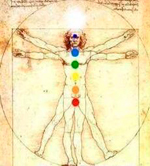Intensive Overview – Core Principles VI
Hylegiacal Points – Forces of Life

The length of life takes the leading place among enquiries about events following birth.
Ptolemy – Tetrabiblos (Ashmand trans)
From ancient times astrology has attempted to understand the physical body and the quality of lifeforce. There were principles and techniques throughout the Art’s history about health, life, sickness and death. These related to horoscopic components concerned with reinforcing/supporting or debilitating/draining well-being. In addition, astrological approaches to health and vitality differed from one author to the next, with a great complexity of technique. However, there are considerations of interest to the astrological student concerning the potential for well-being. Some of them are well-known and promoted today.
This Intensive reviews several traditional approaches and related methods pertaining to this topic.
Certain astrological factors were seen as primary, and have been called a ‘vital core’ when it comes to judging vitality indications. These were also known as hylegiacal or aphetic points, ideally supportive to the lifeforce. Most important were the Sun and Moon, Ascendant, and Lot of Fortune which established a relationship between luminaries and angles. It is consideration of these points that offers a key to unlock perspective and insight into a figure.
Each of these baseline indicators relates to notable natural cycles and rhythms.
The Ascendant – relates to the natural circadian cycle stemming from the daily rotation of the Earth.
The Moon – has a regular cycle of waxing and waning which measures the rhythm of the lunar months.
The Sun – regards the annual cycle of the solstices and equinoxes which set the seasons of the solar year.
(so due to principles of light and angularity, Fortuna and the prenatal syzergy have also been considered to symbolise life-giving capacity).
Modern Western medicine stems from the antiquity of traditional Greek roots, as does modern horoscopic astrology. Over many centuries and cultures a connection between astrology and medicine continued, with both subjects having a place in university-level learning.
To such as study astrology, who are the only men I know of that are fit to study physick, physick without astrology being like a lamp without oil.
Nicholas Culpeper (1616-1654)
The last time astrology was taught within an academic environment was in the 17th century. While medicine became increasingly formalised as a learned endeavour, the two disciplines parted ways. Today ‘medical astrology’ is an extremely complex field and true applied practice of it is very rare (particularly in the west). In truth any practitioner of ‘medical astrology’ would have to be qualified in science/medicine and in astrology. Additionally, astrological history, philosophy, and technique, currently requires much ongoing effort and research, and remains a work in progress.
This post is a brief summary of the presentation. The intensive was first presented in Brisbane (QFA) in July 2009 and on the Gold Coast (GCAS) in September 2009.
Contact the Astrology Project – Join the mailing list for regular information on Intensives and topics of astrological interest. Email: